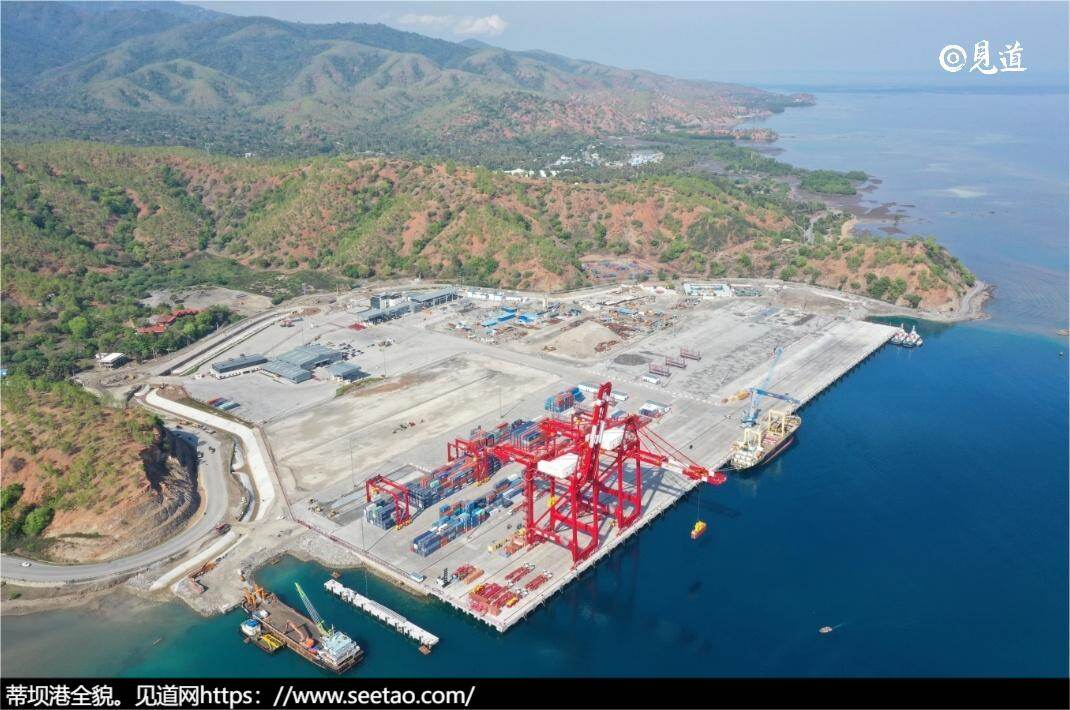- The Diba Port project adopts Chinese technology and equipment, and also incorporates a large number of Chinese elements
- The implementation of the One Network, One Road, One Port project has greatly alleviated the electricity shortage in East Timor and promoted the interconnection of infrastructure in East Timor
2023 is the tenth anniversary of the the Belt and Road Initiative. The "One Network, One Road, One Port" project jointly constructed by Timor Leste and China, namely, the National Grid of Timor Leste, the Su'ai Expressway and the Tiba Port, has significantly improved the local infrastructure and improved people's well-being. It has become a benchmark for practical cooperation between the two sides, and has also witnessed win-win cooperation and people to people connectivity in the process of jointly building the the Belt and Road.
The East Timor State Grid project, constructed and operated and maintained by CNNC 22, is the largest power infrastructure construction project in East Timor, including one national dispatch center, nine substations, 603 kilometers of high-voltage transmission lines, and 120 kilometers of medium voltage distribution lines. These collaborative projects are the pride of the people of East Timor, achieving multiple firsts in East Timor.

"Once, over 80% of East Timor was without electricity. It can be said that the 'One Grid' project illuminated East Timor." Dai Linfeng, General Manager of the East Timor Branch of CNNC 22, introduced that since the first substation was built and put into operation, the East Timor State Grid has cumulatively transmitted and transformed 4.09 million megawatts of electricity, bringing light to over 1.3 million East Timorese people and greatly improving the current situation of power shortage in the country.

East Timor State Grid Power Supply Line Diagram
The "One Road" project has also significantly improved the convenience of travel for the people of East Timor.

East Timor's infrastructure is relatively backward, with many bumpy dirt roads in other places except for the capital Dili. The Su'ai Expressway, constructed by China Railway Corporation, is seen as a landmark project for East Timor to enter the "high-speed era".
The first phase of the Suai Expressway project has a total length of 30.355 kilometers, with a design standard of four lanes in both directions and a speed of 80-100 kilometers per hour. It was built in January 2016 and completed in October 2018.
Wang Ligang, General Manager of China Railway China Overseas Engineering Co., Ltd. East Timor Branch, said that the Suai Expressway is the largest transportation infrastructure project in East Timor since its founding and also the first expressway in East Timor. "This project is also a source of pride for the people of East Timor."

The spirit of overcoming difficulties demonstrated by Chinese overseas builders in the construction process, especially the high standards and advanced technologies adopted, have surpassed European and American standards in many aspects, and have won widespread recognition from all sectors of East Timor. According to information from the East Timor government, the Suai Expressway is an important transportation line for the planned southern oil city in East Timor, which is of great significance for the future development of East Timor.
Equally significant is the "One Port" project.
The Tiba Port project, constructed by China Harbour, is located 10 kilometers west of the capital Dili. The main body of the port is a 630-meter-long dock, including a 7000 TEU berth and a 3500 TEU berth. It is the first modern international container freight terminal in East Timor's history.
Li Lin, Business Manager of the East Timor Diba Bay Container Terminal Project Department at China Port, stated that the project was completely designed and constructed by the Chinese side, and a large amount of Chinese technology and equipment were used in the construction process, as well as a lot of Chinese elements. The Tiba Port, officially put into operation in 2022, will greatly enhance East Timor's maritime capacity and better meet the needs of East Timor's economic development.

Chinese enterprises undertaking livelihood projects in East Timor not only strengthen the connectivity of local infrastructure, but also provide a large number of employment opportunities for the local people, providing strong support for the long-term development of East Timor's country. According to Dai Linfeng, the General Manager of the East Timor Branch of China National Nuclear Corporation (CNNC), CNNC is attempting localized operations, managing local employees well, and through theoretical and practical training, driving local employees to learn technology, enabling them to master relevant knowledge of power grid operation and gradually grow into technical backbone.
Wang Ligang, General Manager of China Railway China Overseas Engineering Co., Ltd. East Timor Branch, also stated that Chinese enterprises are actively fulfilling their social responsibilities while carrying out project construction.
"Our dock has been opened to the local people for use, improving the local logistics situation. We have also provided support and sponsorship to local schools and hospitals. In addition, we actively share technical experience with the local people, recruit a large number of local employees, and provide job skills training. Thanks to the Suai project, many local employees' living conditions have been significantly improved."
Not only teach people to fish, but also to fish. This is also a vivid interpretation of the concept of win-win cooperation under the the Belt and Road Initiative. Editor/Zhao E
Comment
 Praise
Praise
 Collect
Collect
 Comment
Comment
 Search
Search














Write something~